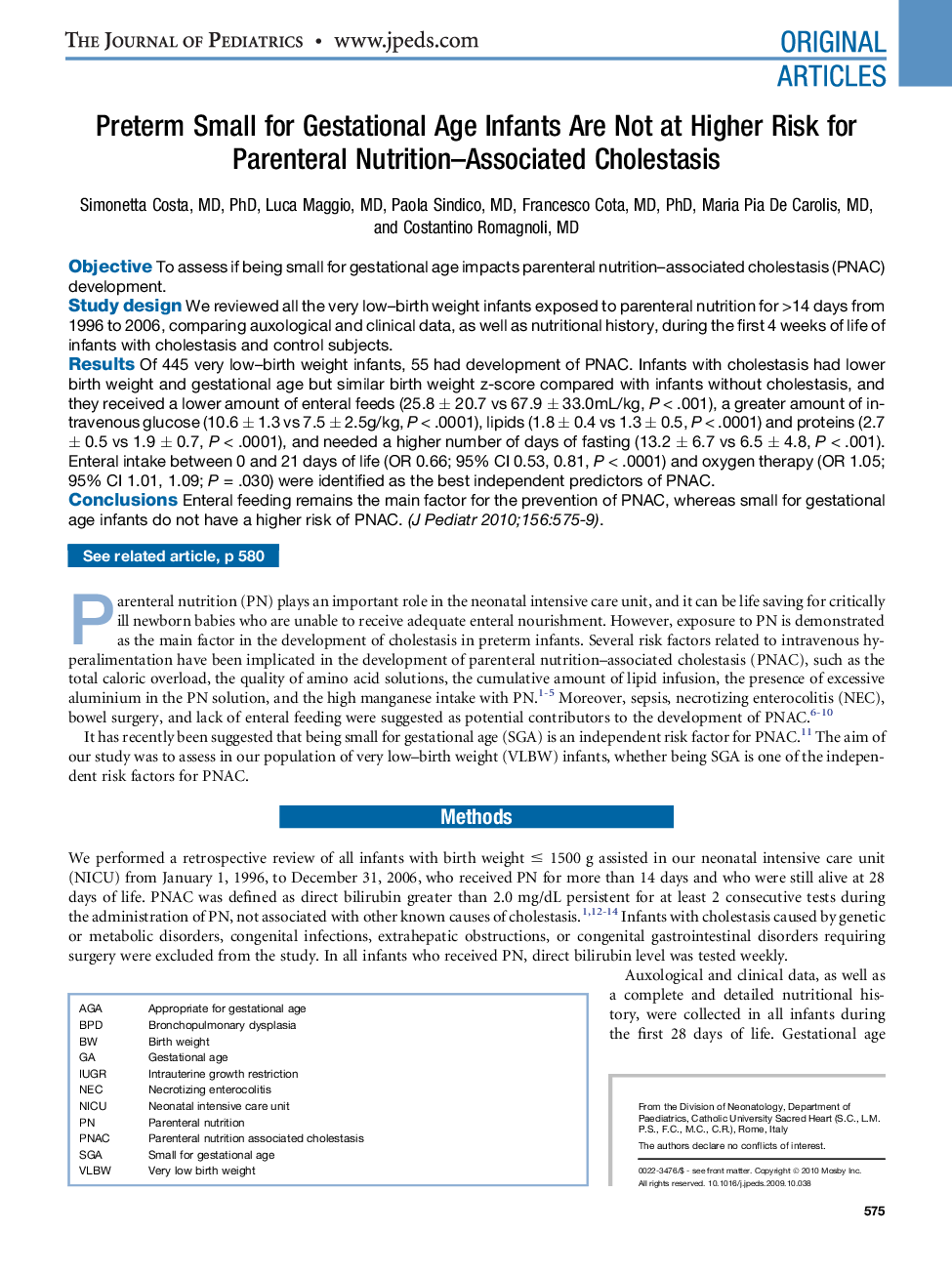| Article ID | Journal | Published Year | Pages | File Type |
|---|---|---|---|---|
| 4166503 | The Journal of Pediatrics | 2010 | 5 Pages |
ObjectiveTo assess if being small for gestational age impacts parenteral nutrition–associated cholestasis (PNAC) development.Study designWe reviewed all the very low–birth weight infants exposed to parenteral nutrition for >14 days from 1996 to 2006, comparing auxological and clinical data, as well as nutritional history, during the first 4 weeks of life of infants with cholestasis and control subjects.ResultsOf 445 very low–birth weight infants, 55 had development of PNAC. Infants with cholestasis had lower birth weight and gestational age but similar birth weight z-score compared with infants without cholestasis, and they received a lower amount of enteral feeds (25.8 ± 20.7 vs 67.9 ± 33.0mL/kg, P < .001), a greater amount of intravenous glucose (10.6 ± 1.3 vs 7.5 ± 2.5g/kg, P < .0001), lipids (1.8 ± 0.4 vs 1.3 ± 0.5, P < .0001) and proteins (2.7 ± 0.5 vs 1.9 ± 0.7, P < .0001), and needed a higher number of days of fasting (13.2 ± 6.7 vs 6.5 ± 4.8, P < .001). Enteral intake between 0 and 21 days of life (OR 0.66; 95% CI 0.53, 0.81, P < .0001) and oxygen therapy (OR 1.05; 95% CI 1.01, 1.09; P = .030) were identified as the best independent predictors of PNAC.ConclusionsEnteral feeding remains the main factor for the prevention of PNAC, whereas small for gestational age infants do not have a higher risk of PNAC.
